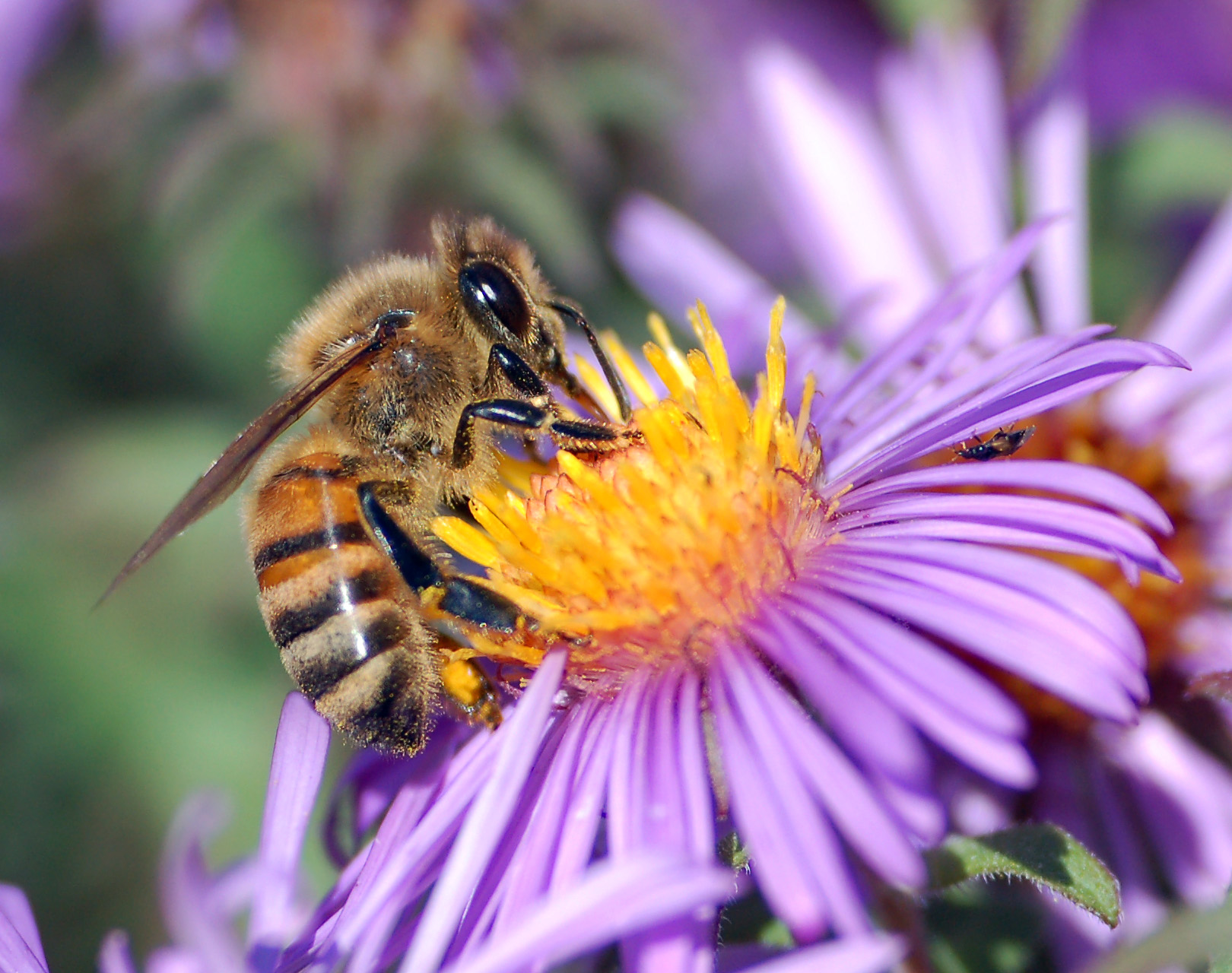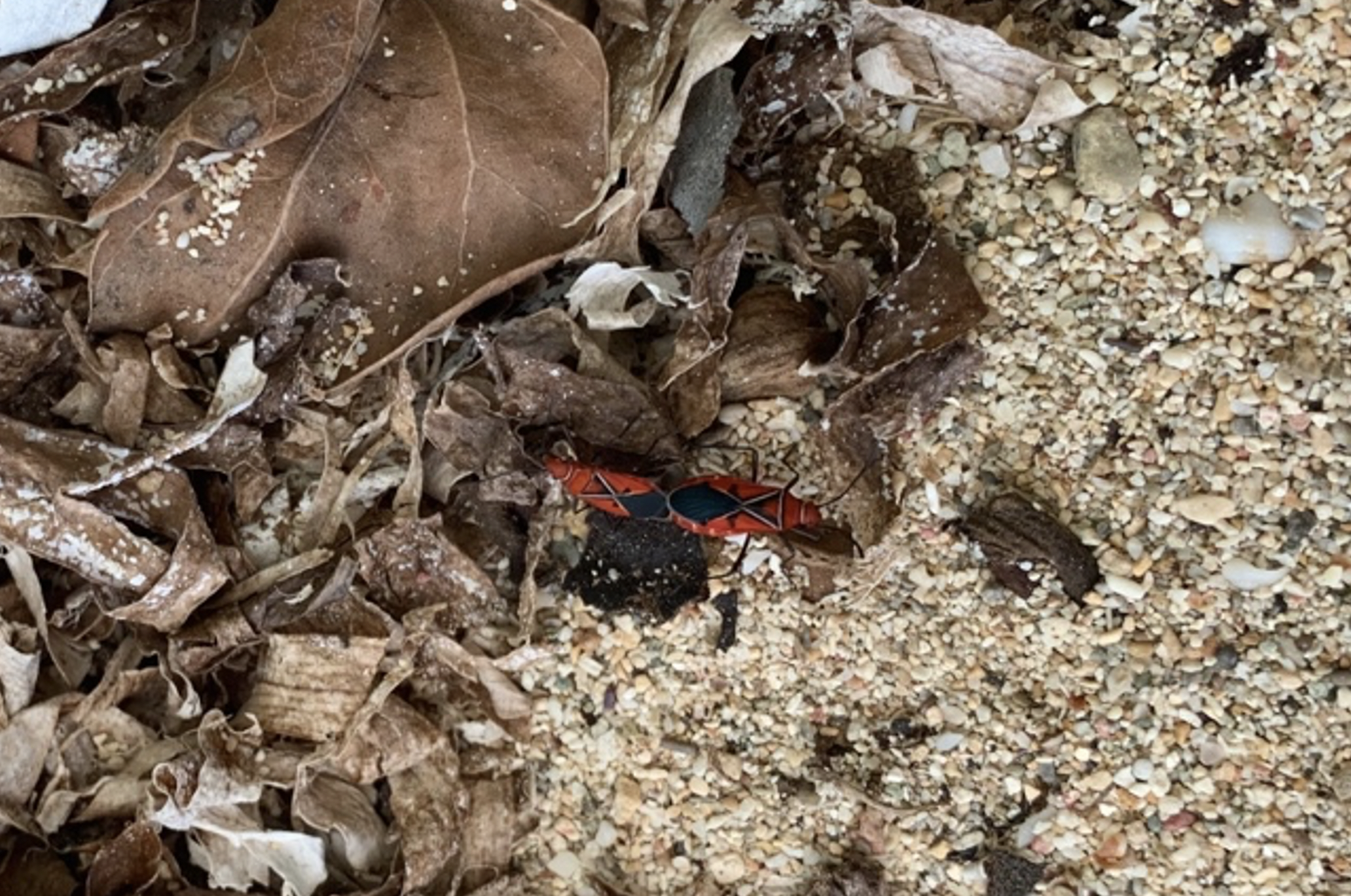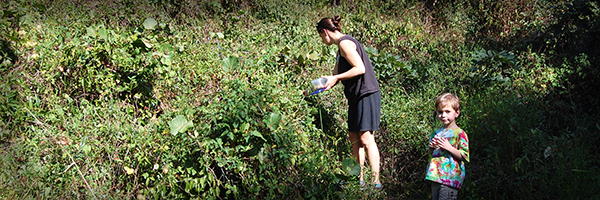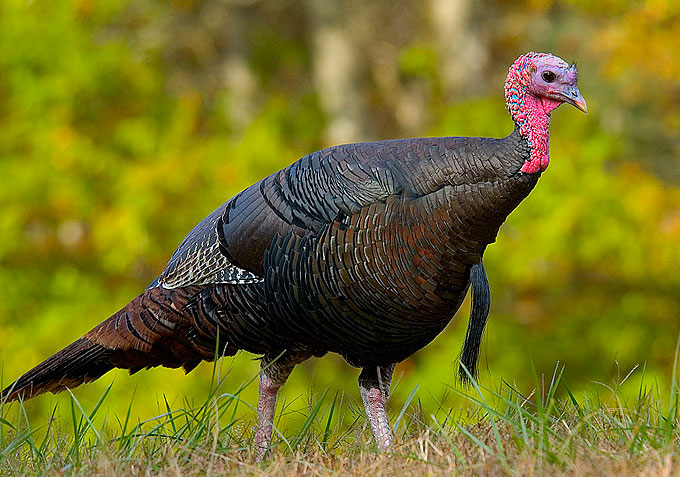Co-author: Mackenzie Scherr
Summer in Maine is one of the most jaw-dropping seasons to witness. Flowers are blooming, trees are beautifully covered in leaves, birds are chirping, and pollinators are roaming everywhere. One of these pollinators, honey bees, sometimes mistakes us for flowers! When we attempt to shoo them away, they can be agitated and want to sting us. Ouch! However, their painful stings should not be a reason for us to hate them or under-appreciate their impact on ecosystems. Honey bees play a vital role in the pollination of important food crops, including many fruits and vegetables. They work collectively to assure that their hive and queen are safe and well-maintained. Interestingly, throughout history, they have also been collaborators on many art pieces.

If we travel far enough back in time, we can date the use of honey bees in art to the Ancient Egyptians and Greeks. Just like modern people, both of these civilizations harvested honey and beeswax for various purposes. The Egyptians used beeswax to tame the hairs in the wigs they made. They also created beeswax carvings and burned them as a way to ward off evil. Ancient Greeks used a mixture of beeswax, tree sap, and pigment as paint for their warships and funeral portraits placed over mummies. It was not until recently that the utility of honey bees in art expanded from their beeswax.
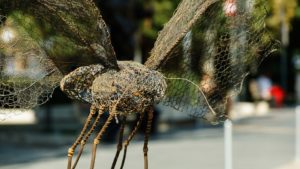
Today, artists are using bees and beehives as direct inspiration for their art. An interactive art piece at London’s Kew Gardens called The Hive displays a beehive on a human scale, so visitors can step inside and view the world from the eyes of a bee. The lighting and music in The Hive respond to the activity of a real beehive nearby. In the nearby beehive, an accelerometer picks up vibrations from the bees. Based on the vibrations from the accelerometer, lights in The Hive turn on and off to represent the places where the real bees are most active. The music, a combination of musicians and real bee sounds, changes based on the activity and sounds from the real beehive. Talk about actually feeling the buzz! On the downside, you won’t be able to taste the honey.

Some artists actually use the bees to help them create their art. For example, Tomas Libertíny makes metal frames in various shapes and then enlists the help of bees to make honeycombs around the existing structure. In this partnership, the artist chooses the design for the art piece and the bees help him create the artwork. By adding food dyes to the bee’s diet, Tomas can add different colors to his insect collaborations. For one of his structures, he managed to complete it in one week with the help of 40,000 bees!
While some people use bees as a source of natural products, we have seen that others use bees as an inspiration to create phenomenal pieces of art. You don’t have to enjoy the presence of bees as much as Tomas Libertíny does. However, next time you see some bees in your backyard, do not rush for the bug spray and fly swatter. Instead, think of them as gardeners who will work for free! That will be an easy and cheap way to ensure that your flowers are blooming and happy.
References
- Palmer, Helen. “The Beekeepers of Ancient Egypt.” Audio blog post. Living on Earth. Public Radio International, 13 Nov. 2015. Web. 15 June 2018, http://www.loe.org/shows/segments.html?programID=15-P13-00046&segmentID=7
- “What is Encaustic?” Encaustic Art Institute, http://www.eainm.com/what-is-encaustic/.
- “The Hive.” Royal Botanic Garden Kew, https://www.kew.org/kew-gardens/attractions/the-hive
- “Real Bees Drive The Hive Experience.” Taming the Savage Cabbage | Kew, 24 May 2017, www.kew.org/blogs/in-the-gardens/real-bees-drive-the-hive-experience.
- “The Art of Bees.” Modern Farmer, Modern Farmer, 28 Apr. 2016, modernfarmer.com/2013/05/the-art-of-bees/.
- Rawsthorn, Alice. “Honeycomb Vase, The.” The New York Times, The New York Times, 9 Dec. 2007, www.nytimes.com/2007/12/09/magazine/09_22_honeycomb.html.

